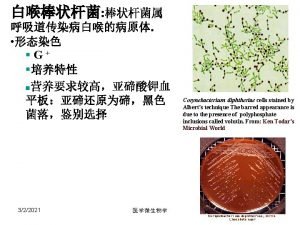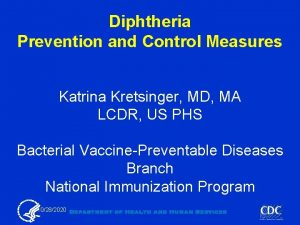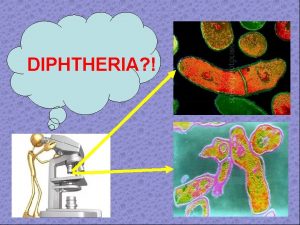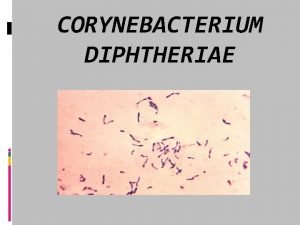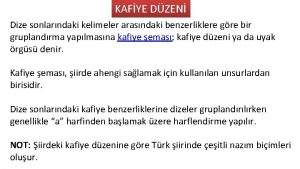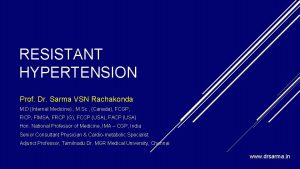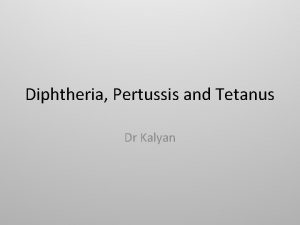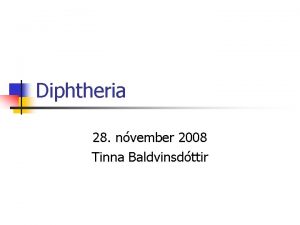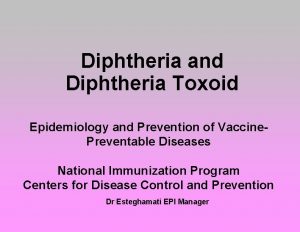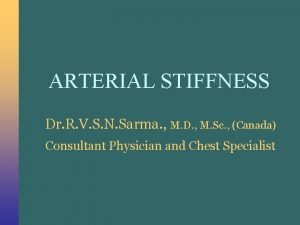Diphtheria Dr Sarma R V S N Consultant














- Slides: 14

Diphtheria Dr. Sarma R V S N Consultant Physician Revised May 2007

Diphtheria Greek diphthera (leather hide) Caused by Aerobic Gram +ve rods Cornyebacterium diphtheriae Exotoxin production only if infected by virus phage infected carrying toxin gene

Gram +ve Bacilli and Colonies

Diphtheria Epidemiology Reservoir Human carriers Usually asymptomatic Transmission Respiratory Skin and fomites rarely Temporal pattern Winter and spring Communicability Up to several weeks without antibiotics

Diphtheria Clinical Features Incubation period 2 -5 days (range, 1 -10 days) May involve any mucous membrane Classified based on site of infection anterior nasal pharyngeal and tonsillar laryngeal cutaneous ocular genital

Pharyngeal and Tonsillar Diphtheria Insidious onset of exudative pharyngitis Exudate spreads within 2 -3 days and may form adherent pseudo membrane Membrane may cause respiratory obstruction Fever usually not high but patient appears toxic

Thick Membrane

Pseudo membrane

‘Bull Neck’

Skin Lesions

Diphtheria Complications Mostly attributable to toxin Severity generally related to extent of local disease Most common complications are myocarditis and toxic neuritis with palsy Death occurs in 5%-10% for respiratory disease

Diphtheria Antitoxin (DAT) Produced in horses First used in the U. S. in 1891 Used only for treatment of diphtheria Neutralizes only unbound toxin

Diphtheria – in USA, 1940 -2005* *2005 provisional total Year

DTa. P, DT, and Td DTa. P, DT Td, Tdap (adult) Diphtheria 7 -8 Lf units Tetanus 5 -12. 5 Lf units 2 -2. 5 Lf units
